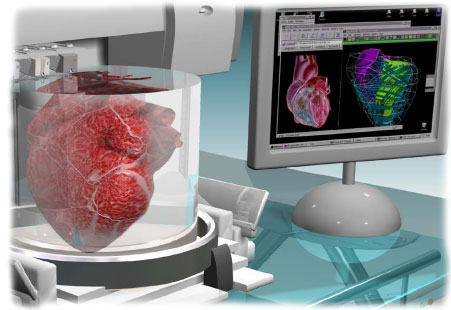I’d love for Emma Lavelle, a four-and-a-half-year-old, to be able to move her arms on her own.
She was diagnosed at birth with Arthrogryposis Multiplex Congenita (AMC), a rare neuromuscular condition in which joints develop in the wrong places.
When Emma was born, her legs were attached to her ears. Her shoulders rotated the wrong way and she had nearly nonexistent biceps.
But what’s that, you say?
Emma’s already been given a robotic exoskeleton with custom-made appendages that allow her to move her arms.

Incredible.
Then I’d like a new house, please…
I’d like it custom-designed and completely constructed in the next 20 hours — including plumbing, electric, and all fittings and finishes.
Wait, what? This exists, too?
Then I want custom cases for all my electronics, with design and aesthetics that relate to my hobbies and interests, and that are fully functional. Maybe some of these cases have built-in stands for viewing media (like this newsletter).
Throw in a made-to-order charging dock in any shape or pattern I want that doubles as a speaker amplifier.
These are also on the market?
Then I’d like a way to heal my body that’s never be accomplished before… a way to replicate my organs — or any other tissue — in case of disease or disaster.
And I want these new tissues and organs to come from my own cells, so my body doesn’t reject them.
C’mon, you’re telling me creating new organs from my existing ones can already be done?

I give up.
Where did all these advances come from?
3D Printing
Put simply, a new technology called 3D printing has changed all this. And it will continue to change everything you once took for granted.
Here’s the Economist, which describes it more succinctly than I can:
It works like this. First you call up a blueprint on your computer screen and tinker with its shape and colour where necessary. Then you press print. A machine nearby whirrs into life and builds up the object gradually, either by depositing material from a nozzle, or by selectively solidifying a thin layer of plastic or metal dust using tiny drops of glue or a tightly focused beam. Products are thus built up by progressively adding material, one layer at a time: hence the technology’s other name, additive manufacturing.
Instead of printing out words on a page…
Just as you open a document and print it, 3D printing allows you to open up a design or blueprint and “print” it.
It’s real. And it’s going to affect nearly every manufactured product and company involved.
The U.S. military just opened a $30 million National Additive Manufacturing Institute in Youngstown, Ohio.
The U.S. Army deployed 20-foot shipping containers loaded with 3D printers to Afghanistan in July. Each container is staffed by two engineers and uses plastic, steel, and aluminum to print out battlefield equipment and replacement parts on the fly.
They cost $2.8 million apiece.
But the cost is coming down dramatically for do-it-yourselfers. You can get one in your home right now for about $1,000.
And that price is falling every day…
Soon we’ll reach the point — just as we did with computers in the 1990s — where everyone has one of these in their homes, able to print out whatever they want.
It will create a brand-new trillion-dollar industry where products are both designed and manufactured in the U.S.
To understand just how big it will be, though, you have to actually see it for yourself.
Only after you’ve seen a 3D printer in action and witnessed the limitless amount of products in can create can you appreciate what kind of investment scenario it presents… and how much you stand to make by investing now.
Call it like you see it,

Nick Hodge
Nick is the founder and president of the Outsider Club, and the investment director of the thousands-strong stock advisories, Early Advantage and Wall Street’s Underground Profits. He also heads Nick’s Notebook, a private placement and alert service that has raised tens of millions of dollars of investment capital for resource, energy, cannabis, and medical technology companies. Co-author of two best-selling investment books, including Energy Investing for Dummies, his insights have been shared on news programs and in magazines and newspapers around the world. For more on Nick, take a look at his editor’s page.

 @nickchodge on Twitter
@nickchodge on Twitter